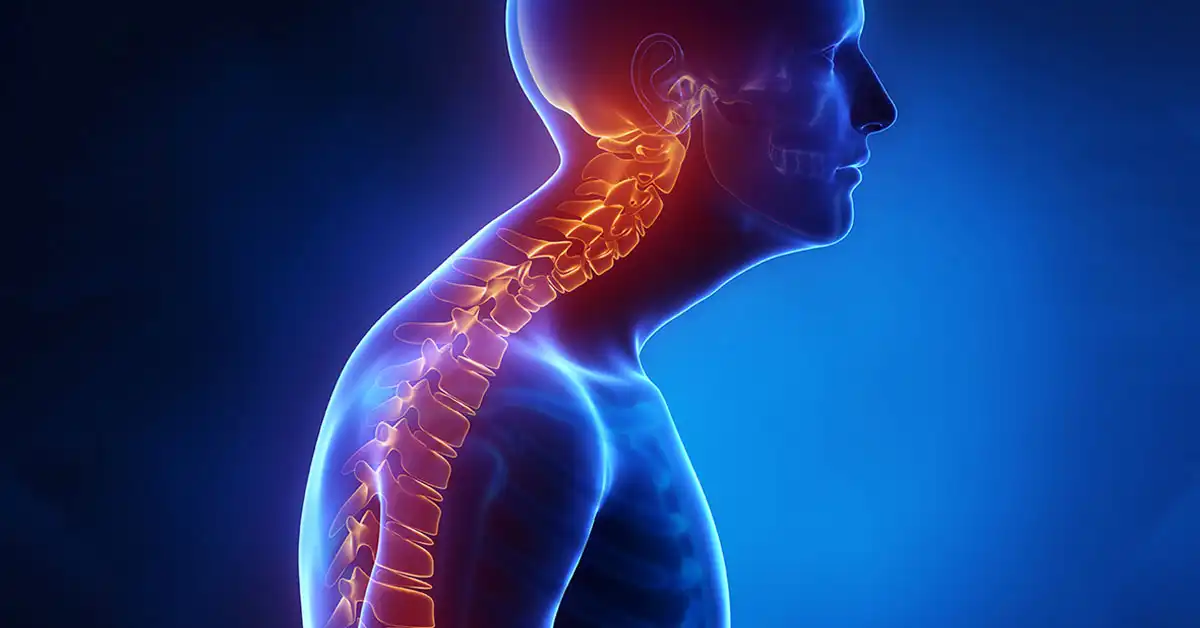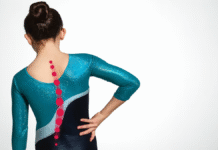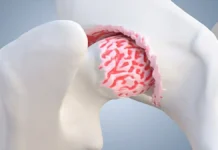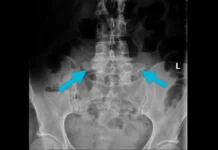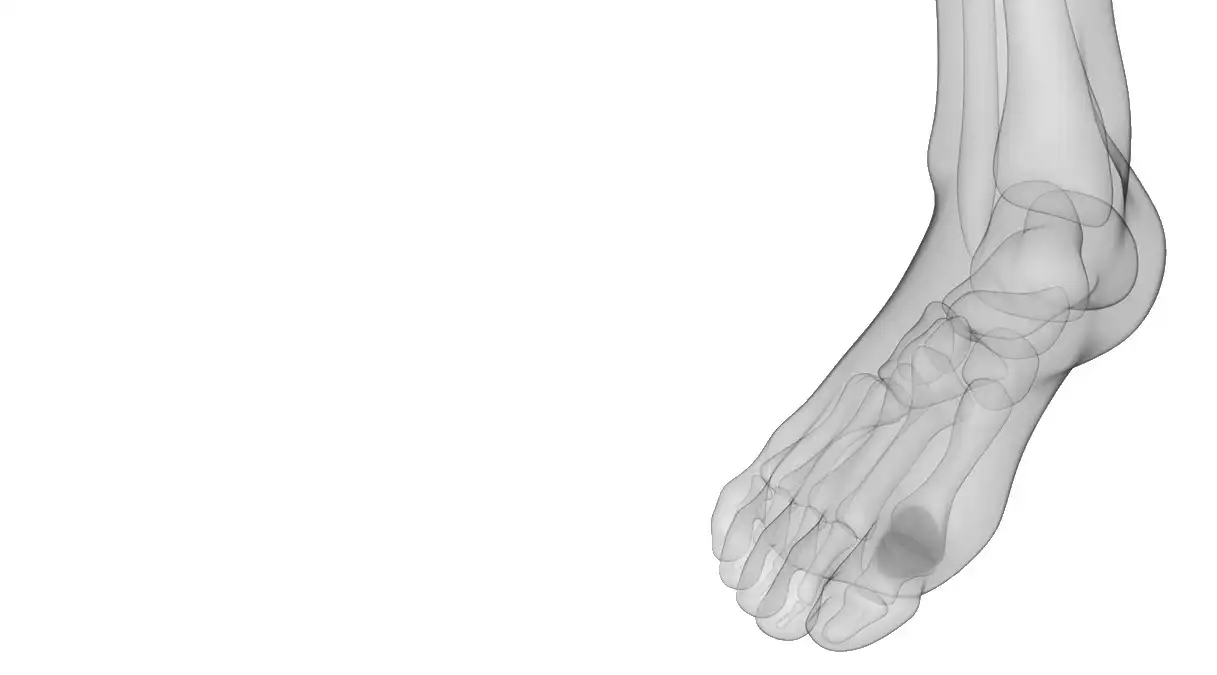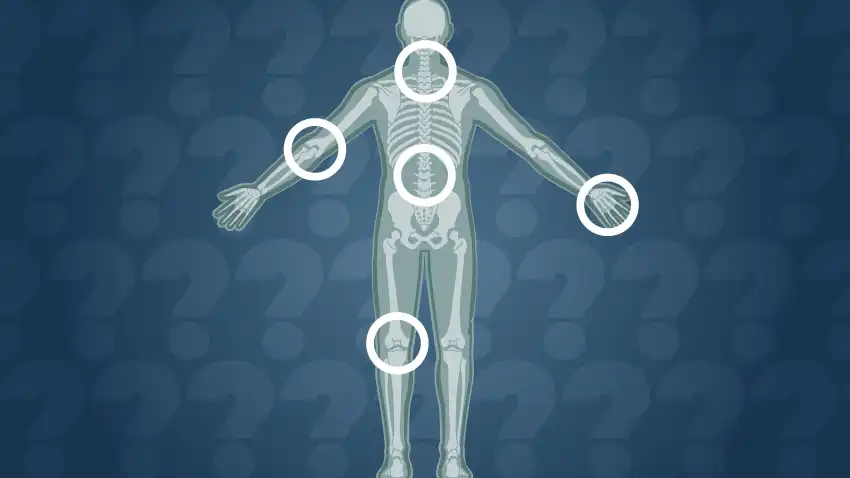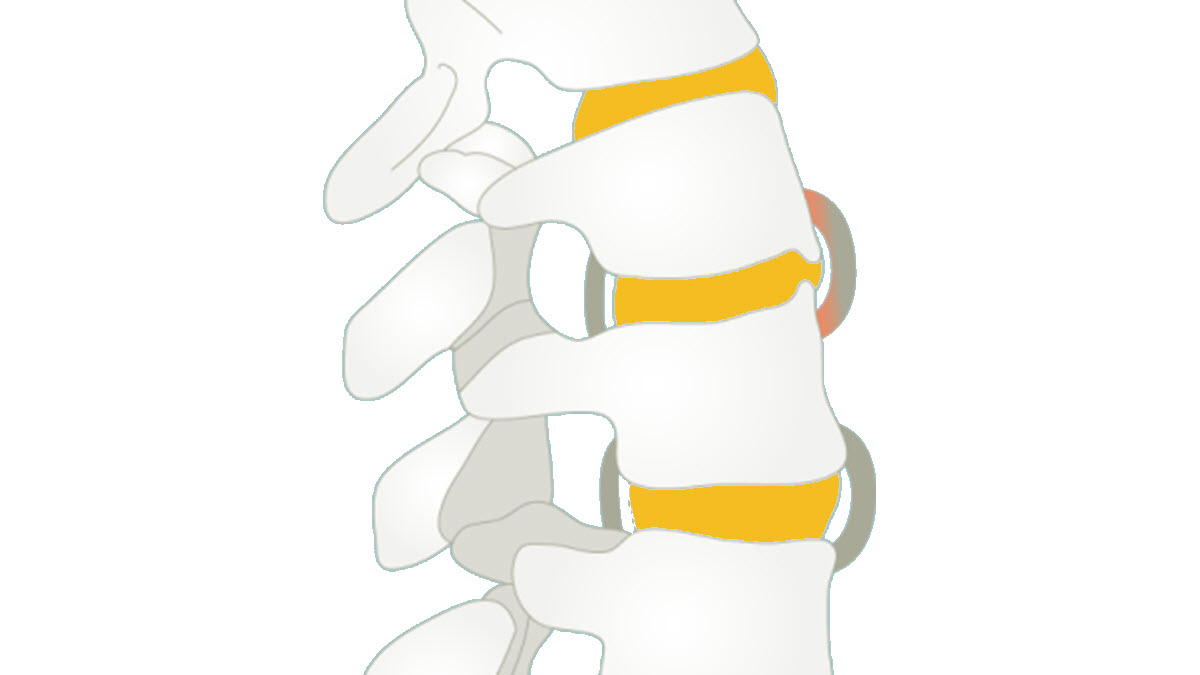Introduction
Dorsal kyphosis, an excessive backward curvature of the upper spine, can cause a variety of physical problems and affect a person’s quality of life. The osteopathic approach often proves beneficial in the management of dorsal kyphosis, seeking to restore the structural balance of the body and alleviate associated symptoms.
Osteopathy considers the body as a whole, emphasizing the relationship between structure and function. In the context of dorsal kyphosis, osteopaths focus on evaluating musculoskeletal imbalances, ligamentous tensions and possible mobility restrictions in the spine. This holistic approach aims to identify the underlying causes of kyphosis and develop a suitable treatment plan.
The osteopathic techniques applied to treat dorsal kyphosis may vary depending on the specific needs of the patient. Gentle joint manipulations, mobilizations, and stretching are often used to improve spinal mobility and restore its natural alignment. These interventions aim to reduce muscle tension and restore balance between structures, thereby helping to alleviate excessive curvature.
At the same time, the osteopath can work on the surrounding musculature, with emphasis on strengthening the muscles of the back and trunk. Specific exercises may be recommended to help stabilize the spine and prevent the progression of kyphosis. Educating the patient on correct postures and lifestyle habits favorable to spinal health is also an integral part of osteopathic treatment.
The preventive approach is a crucial aspect of the osteopathic management of dorsal kyphosis. By working with the patient to identify and correct harmful postural habits, the osteopath aims to prevent the recurrence of problems and promote the maintenance of a healthy spine.
It is important to emphasize that osteopathy does not only aim to treat the symptoms of dorsal kyphosis, but also seeks to understand and treat the underlying factors that contribute to this condition. An individualized approach is essential, taking into account the patient’s anatomical specificities, medical history and lifestyle.
Possible causes of excessive dorsal kyphosis
Excessive dorsal kyphosis can originate from a variety of causes, reflecting a complex combination of genetic, anatomical, and environmental factors. Birth defects, such as malformed vertebrae, can contribute to this condition as early as embryonic development. Incorrect postural habits, often linked to sedentary lifestyles or heavy use of electronic devices, can gradually influence spinal curvature over time. Medical conditions such as osteoporosis, ankylosing spondylitis, or Scheuermann syndrome may also play a significant role. Additionally, spinal trauma and neuromuscular disorders can disrupt musculoskeletal balance, leading to excessive dorsal curvature. Understanding these various causes is essential for an accurate diagnosis and the implementation of an appropriate treatment plan, often integrating multidisciplinary approaches to address the genetic, structural, and functional aspects of dorsal kyphosis.
- Incorrect Posture: Poor posture, especially prolonged sitting with shoulders slumped forward, can contribute to back kyphosis.
- Spinal Problems: Spinal abnormalities, such as fractures, vertebral collapses or congenital anomalies, can lead to excessive kyphosis.
- Osteoporosis: Osteoporosis, a condition characterized by loss of bone density, can weaken the vertebrae, contributing to kyphosis.
- Scheuermann Syndrome: A condition that usually develops during growth, Scheuermann syndrome causes dorsal kyphosis due to abnormal growth of the vertebrae.
- Myopathies: Certain muscular disorders can lead to weakness of the back muscles, contributing to a kyphotic posture.
- Arthritis: Some forms of arthritis, such as ankylosing spondylitis, can affect the spine and contribute to kyphosis.
Symptoms associated with excessive dorsal kyphosis
Excessive dorsal kyphosis, also known as “hunched back” or “round back,” is a condition characterized by an abnormally pronounced curvature of the dorsal region of the spine. Symptoms associated with this condition can vary in intensity and nature, but are generally related to structural changes in the spine.
One of the most common symptoms is the presence of a visible bump on the back of the upper back. This deformity may be more obvious when the person is standing or sitting. Besides the visual aspect, excessive dorsal kyphosis can lead to back pain, especially in the affected region. This pain can be chronic and affect the patient’s quality of daily life.
Reduced mobility in the spine is also a common symptom. People with excessive dorsal kyphosis may experience stiffness and limitation of movement, which may affect their ability to perform normal daily activities. It can also contribute to altered posture, with a forward tilt of the head and shoulders.
Neurological symptoms may also accompany excessive dorsal kyphosis, particularly if the curvature affects the spinal nerves. This may manifest as numbness, tingling, or weakness in the arms and hands. In some cases, increased pressure on the nerves can lead to persistent headaches.
In addition to the physical aspects, excessive dorsal kyphosis can have psychological repercussions. Some patients may experience significant cosmetic discomfort due to the deformity of their back, which can affect their self-confidence and emotional well-being.
- Back pain: Excessive kyphosis can lead to back pain, especially in the thoracic region.
- Rigidity: Stiffness in the back may be present, sometimes limiting mobility.
- Muscle fatigue: The muscles around the spine can fatigue more quickly.
- Breathing problems: In severe cases, excessive kyphosis can affect lung capacity and cause breathing problems.
With kyphosis, a pattern of muscles responding to stress by adaptively shortening or weakening appears in the shoulder and neck region.
- In this Janda Crossed Shoulder Syndrome:
- Shortened shoulder protractors
- Neck extensors
- Inhibit the posterior thoracic muscles
- Anterior neck flexors
- Suprahyoids and infrahyoids, producing an increase in the thoracic curve and a compensatory increase in the cervical lordotic curve.
Pathophysiology of excessive dorsal kyphosis
The pathophysiology of excessive dorsal kyphosis, often referred to as “hunched back” or “round back,” is complex and involves structural alterations of the spine. This condition is characterized by excessive curvature of the dorsal region, creating a noticeable deformity. Understanding the mechanisms underlying this kyphosis sheds light on the possible causes and implications for spinal health.
The first component of the pathophysiology of excessive dorsal kyphosis lies in morphological changes of the spine. An increase in thoracic curvature can result from a variety of factors, such as birth defects, poor posture, osteoporosis, or disorders of bone development. These structural alterations can lead to progressive deformation of the spine, thereby contributing to the visible manifestation of kyphosis.
At the anatomical level, excessive dorsal kyphosis affects the configuration of the thoracic vertebrae. Compression of the intervertebral discs, responsible for cushioning shocks between the vertebrae, can lead to premature wear and degenerative changes. These structural changes can cause back pain, resulting from increased pressure on adjacent structures, including muscles, ligaments, and nerves.
The pathophysiology of excessive dorsal kyphosis may also involve muscular and ligamentous factors. The back muscles, especially those that support the spine, can become weakened or unbalanced, contributing to the progression of excessive curvature. Additionally, the ligaments that maintain spinal stability can experience excessive strain, negatively influencing posture and mobility.
The neurological aspects of the pathophysiology are also significant. Severe excessive dorsal kyphosis can compress the nerve roots emerging from the spine, leading to symptoms such as numbness, tingling, or even weakness in the upper extremities. This nerve compression can have significant functional repercussions, affecting the patient’s quality of life.
- Posture Issues: Poor posture, often due to daily habits, muscle weakening, or excessive use of electronic devices, can contribute to the development of excessive back kyphosis.
- Spinal Deformities: Birth defects or problems with spinal development can lead to dorsal kyphosis. For example, malformation of certain thoracic vertebrae can cause excessive curvature.
- Muscle disorders: Muscle imbalances in the back region can influence posture and contribute to back kyphosis. A weakening of the back muscles compared to the chest muscles can contribute to this excessive curvature.
- Osteoporosis: Osteoporosis, a condition characterized by decreased bone density, can weaken the vertebrae and contribute to dorsal kyphosis.
- Spondylolisthesis: This is a condition where one vertebra slips forward relative to the underlying vertebra, which can contribute to excessive curvature of the spine.
- Neuromuscular diseases: Certain neuromuscular diseases can affect muscle stability and contribute to postural changes, increasing the risk of dorsal kyphosis.
Depending on the underlying cause, excessive dorsal kyphosis can cause symptoms such as back pain, decreased mobility, impaired lung function (in severe cases), and cosmetic changes in posture.
Differential diagnoses of dorsal kyphosis
- Normal Lordosis: Lordosis is the normal forward curvature of the spine at the lumbar level. Excessive lordosis can sometimes be confused with dorsal kyphosis, especially when assessing overall back posture.
- Scoliosis: Scoliosis is a lateral deviation of the spine. Although this is different from dorsal kyphosis, it is possible to have a combination of scoliosis and kyphosis, which is called kyphoscoliosis.
- Spondylolisthesis: This condition occurs when one vertebra slips forward relative to the underlying vertebra. Spondylolisthesis can sometimes be associated with dorsal kyphosis.
- Birth defects: Birth defects of the spine can cause abnormal curvatures. These abnormalities can often be identified through imaging tests.
- Spinal Tumors: Spinal tumors can cause structural changes and abnormal curvatures. Tumors must be excluded by imaging tests, such as magnetic resonance imaging (MRI) or computed tomography (CT).
- Spinal Infections: Spinal infections, such as spondylodiscitis, can lead to structural changes and abnormal curvatures.
- Neuromuscular diseases: Certain neuromuscular disorders, such as muscular dystrophy, can influence posture and cause abnormal bends.
- Genetic syndromes: Some genetic syndromes, such as Marfan syndrome, may be associated with spinal abnormalities.
Diagnosis of dorsal kyphosis
- Clinical Examination: A healthcare professional will perform a physical examination to assess posture, mobility and spinal curvature.
- Medical imaging :
- X-rays: X-rays of the back may be taken to measure the angle of the curvature and identify the presence of dorsal kyphosis.
- MRI (Magnetic Resonance Imaging): Used to evaluate the structures of the intervertebral discs, vertebrae and soft tissues.
- Cobb Angle Measurement: The Cobb angle, measured on radiographs, is used to quantify the curvature of the spine and determine the severity of dorsal kyphosis.
- Neurological Evaluation: To exclude any associated nerve damage.
Treatment of Dorsal Kyphosis
The choice of treatment depends on the severity of the kyphosis, the underlying cause, the patient’s age and other factors. Treatment approaches may include:
- Observation :
- For mild kyphosis without serious symptoms.
- Regular monitoring of the progression of the curvature.
- Osteopathy:
- Specific exercises to strengthen the back muscles and improve posture.
- Stretching techniques to promote flexibility.
- Orthotics:
- Corsets or orthotics to support the spine in growing adolescents to prevent worsening of kyphosis.
- Drugs :
- Analgesics or nonsteroidal anti-inflammatory drugs (NSAIDs) to relieve associated pain.
- Lifestyle Change:
- Encourage good posture every day.
- Ergonomics education, especially when using computers and chairs.
- Surgical intervention :
- In case of severe, progressive kyphosis, or if it is associated with neurological problems.
- The surgery aims to correct the curvature, stabilize the spine and relieve pressure on the nerves.
- Rehabilitation:
- After surgery, a period of rehabilitation is often necessary, involving physiotherapy and exercises to restore strength and mobility.
Radiographic signs of dorsal kyphosis
Exploration of radiographic signs of dorsal kyphosis is essential to diagnose and evaluate this condition affecting the curvature of the spine. X-ray images provide detailed information about the structure and alignment of the vertebrae, allowing healthcare professionals, such as osteopaths, to identify the presence and severity of dorsal kyphosis.
One of the most obvious radiographic signs of dorsal kyphosis is excessive curvature of the spine in the thoracic region. On a lateral x-ray, there is an increased forward curvature, giving the spine an inverted “C” or “S” shape. This deviation from the normal curvature can be measured using specific angles, allowing the severity of the kyphosis to be assessed.
Another important radiographic feature is deformity of the intervertebral discs. These structures, located between the vertebrae, may show signs of compression or flattening in the region affected by dorsal kyphosis. These changes in the intervertebral discs reflect the additional stresses placed on the spine due to excessive curvature.
X-ray images also help assess the presence of osteophytes, bony growths often seen in cases of dorsal kyphosis. These osteophytes may form in response to increased stress on the spinal joints, contributing to the degenerative changes associated with this condition.
X-ray analysis can also reveal changes in the vertebrae themselves. Structural abnormalities, such as flattened vertebral corners or changes in the shape of the vertebral bodies, are radiographic findings commonly associated with excessive dorsal kyphosis.
In addition to structural aspects, x-ray images can be useful in assessing overall body alignment, including the patient’s posture. Excessive dorsal kyphosis can influence the position of the head, shoulders and pelvis, and these elements are visible on x-rays, contributing to the overall diagnosis of the condition.
- Cobb Angle: Cobb angle is the angular measurement used to assess the curvature of the spine. It is measured by drawing lines along the upper and lower edges of the vertebrae most inclined in the curvature. A Cobb angle greater than 40 degrees is generally considered significant kyphosis.
- Fusion vertebrae: In some cases of dorsal kyphosis, the vertebrae may show signs of fusion, which may be due to birth defects or specific medical conditions.
- Shape of the intervertebral discs: X-rays may reveal changes in the shape of the intervertebral discs, such as flattening or thinning, which may be associated with dorsal kyphosis.
- Displacement of the vertebrae: X-rays may show abnormal displacement of the vertebrae, especially in the case of spondylolisthesis, where one vertebra slips forward relative to the underlying vertebra.
- Bone abnormalities: Bone abnormalities such as vertebral dysplasias may be seen on x-rays, contributing to dorsal kyphosis.
- Assessing bone density: If dorsal kyphosis is due to osteoporosis, x-rays may reveal decreased bone density.
- Overall curvature of the spine: Frontal and lateral radiographs allow the overall curvature of the spine to be assessed and the presence of kyphosis to be identified.
Radiographic evaluation is usually performed in conjunction with other imaging tests such as magnetic resonance imaging (MRI) or computed tomography (CT) to obtain a complete picture of the spinal structure and to exclude Other possible causes of curvature.

Head: The head is positioned forward, placing strain on the neck extensors and increasing the curve of the cervical spine.
Neck: There is an exaggerated curve in the cervical region due to the forward head posture.
Scapulae: The shoulder blades are abducted, contributing to the rounding of the upper back (kyphosis).
Thorax: An increased thoracic curve (kyphosis) is present, often resulting from shortened pectoral muscles and weakened upper back muscles.
Lower back: The lumbar spine exhibits hyperextension (lordosis), with tight lower back muscles and weak abdominal muscles contributing to this condition.
Hips: The hips are flexed due to tight hip flexors, pulling the pelvis into an anterior pelvic tilt.
Pelvis: The pelvis tilts forward (anterior pelvic tilt), shifting the spine’s curvature and influencing both kyphosis and lordosis.
Knees: The knees are slightly hyperextended, a common compensation for the anterior pelvic tilt.
Feet: Slight plantar flexion in the feet is often observed, contributing to the overall imbalance.
Muscle involvement:
Short and Tight: Neck extensors, hip flexors, and lower back muscles are tight and shortened.
Lengthened and Weak: Neck flexors, upper back, hamstrings, and possibly abdominal muscles are lengthened and weak.
This postural imbalance can result from prolonged sitting, poor posture habits, or muscle imbalances, and may lead to chronic pain and reduced mobility. Regular osteopathic treatment and corrective exercises can help address the muscle imbalances, restore alignment, and improve posture.
Exercise and stretching
Strengthen weak structures
- Rhomboids
- Client on stomach
- Both arms at 90 degrees of abduction
- The two humeri rotate internally, and squeeze the shoulder blades together.
- The resistance progresses – at first it is only against gravity and eventually the client uses weights.
- To strengthen the middle trapezius, the exercise is repeated but with the humeri facing outwards
Stretch shortened muscles
- Self-stretching of the pectoralis major is performed in an open doorway.
- The client stands with his hands and forearms resting on the door frame.
- One foot is in front of the other with the knee of the front foot flexed.
- To stretch the clavicular fibers of the pectoralis major, the hands are held just below shoulder height and the client leans through the doorway.
- To stretch the sternal fibers, the hands are held above the head so that both shoulders are abducted 90 degrees.
- To stretch the costal and abdominal fibers as well as the pectoralis minor, the client moves the arms above 120 degrees of abduction.
- Each stretch is held for at least 30 seconds (Travel/, Simons, 1992).


Clavicular fibers (A): To target the clavicular fibers, stand in a doorway with your elbows bent at 90 degrees and arms slightly above shoulder height. Place your forearms on the doorframe and gently lean forward, feeling the stretch across the upper part of your chest. This position focuses on the fibers that attach to the clavicle.
Sternal fibers (B): For the sternal fibers, position your arms at shoulder height on the doorframe. Lean forward in the doorway, keeping your chest open and your back straight. This will stretch the middle part of the chest, emphasizing the fibers attached to the sternum.
Costal fibers (C): To stretch the costal fibers, place your arms lower on the doorframe, just below shoulder height. Lean forward and arch your back slightly. This stretch targets the lower fibers of the pectoralis major, which are connected to the ribs.
This doorway stretch is excellent for relieving tension, improving flexibility, and opening the chest, particularly for those who experience tightness from activities such as sitting or working at a desk for extended periods.
Conclusion
Dorsal hyperkyphosis, or excessive curvature of the thoracic spine, is a condition that can significantly impact both posture and overall health. Left unaddressed, it may lead to complications such as back pain, reduced mobility, and even respiratory issues. Osteopathic treatment offers a holistic approach to managing this condition by improving mobility, reducing muscle tension, and restoring postural alignment. With proper intervention, including manual therapy and personalized exercises, many individuals can experience significant improvement in both function and quality of life. It’s essential to address hyperkyphosis early to prevent its progression and enhance long-term spinal health.
References
- Katzman WB, Wanek L, Shepherd JA, Sellmeyer DE. Age-related hyperkyphosis: its causes, consequences, and management. J Orthop Sports Phys Ther. 2010 Jun;40(6):352-60. doi: 10.2519/jospt.2010.3099.
- Ryan SD, Fried LP. The impact of kyphosis on daily functioning. Journal of the American Geriatrics Society. 1997 Nov;45(11):1479-86. doi: 10.1111/j.1532-5415.1997.tb03193.x.
- Kado DM, Huang MH, Karlamangla AS, Barrett-Connor E, Greendale GA. Hyperkyphotic posture predicts mortality in older community-dwelling men and women: a prospective study. Journal of the American Geriatrics Society. 2004 Oct;52(10):1662-7. doi: 10.1111/j.1532-5415.2004.52458.x.
Multiple Choice Questions on Dorsal Kyphosis
- What is dorsal kyphosis?
- A) Backwards curvature of the spine
- B) Excessive forward curvature of the spine
- C) Normal “S” shaped curvature
- D) Lateral curvature of the spine
- E) None of the above
- What term is sometimes used to describe excessive dorsal kyphosis?
- A) Scoliosis
- B) Flat back
- C) Round back
- D) Lordosis
- E) None of the above
- Which healthcare professional takes a comprehensive approach to treating dorsal kyphosis?
- A) Orthopedic surgeon
- B) Osteopath
- C) Rheumatologist
- D) Neurologist
- E) Physiotherapist
- What symptoms may be associated with excessive dorsal kyphosis?
- A) Back pain
- B) Respiratory problems
- C) Back stiffness
- D) All of the above choices
- E) None of the above
- What is the main characteristic of the pathophysiology of excessive dorsal kyphosis?
- A) Vertebral deformities
- B) Muscle disorders
- C) Respiratory problems
- D) Congenital anomalies
- E) All of the above
- What imaging test is commonly used to measure the angle of curvature in dorsal kyphosis?
- A) Computed tomography (CT)
- B) Magnetic Resonance Imaging (MRI)
- C) Ultrasound
- D) Radiography
- E) None of the above
- What is the main objective of osteopathy in the treatment of dorsal kyphosis?
- A) Reduce bone density
- B) Restore muscle balance
- C) Fuse the vertebrae
- D) Reduce joint mobility
- E) None of the above
- What can contribute to the development of excessive dorsal kyphosis according to the pathophysiology mentioned?
- A) Osteoporosis
- B) Vision problems
- C) Dental deformities
- D) Sports injuries
- E) None of the above
- What is the main difference between lordosis and dorsal kyphosis?
- A) Lordosis is an excessive forward curvature
- B) Dorsal kyphosis is a normal “S” shaped curvature
- C) Dorsal kyphosis is an excessive backward curvature
- D) Lordosis affects the thoracic region
- E) None of the above
- What are the radiographic signs of dorsal kyphosis?
- A) Cobb angle
- B) Welded vertebrae
- C) Shape of the intervertebral discs
- D) All of the above choices
- E) None of the above
Answers to Multiple Choice Questions:
- What is dorsal kyphosis?
- B) Excessive forward curvature of the spine
- What term is sometimes used to describe excessive dorsal kyphosis?
- C) Round back
- Which healthcare professional takes a comprehensive approach to treating dorsal kyphosis?
- B) Osteopath
- What symptoms may be associated with excessive dorsal kyphosis?
- D) All of the above choices
- What is the main characteristic of the pathophysiology of excessive dorsal kyphosis?
- E) All of the above
- What imaging test is commonly used to measure the angle of curvature in dorsal kyphosis?
- D) Radiography
- What is the main objective of osteopathy in the treatment of dorsal kyphosis?
- B) Restore muscle balance
- What can contribute to the development of excessive dorsal kyphosis according to the pathophysiology mentioned?
- A) Osteoporosis
- What is the main difference between lordosis and dorsal kyphosis?
- C) Dorsal kyphosis is an excessive backward curvature
- What are the radiographic signs of dorsal kyphosis?
- D) All of the above choices
Multiple Choice Questions on Dorsal Kyphosis (continued):
- What term is used to describe excessive dorsal kyphosis also known as thoracic kyphosis?
- A) Flat back
- B) Round back
- C) Hyperkyphosis
- D) Scoliosis
- E) None of the above
- What is the main characteristic of the pathophysiology linked to muscular problems in excessive dorsal kyphosis?
- A) Vertebral deformities
- B) Osteoporosis
- C) Muscle disorders
- D) Spondylolisthesis
- E) None of the above
- What symptom may be associated with excessive dorsal kyphosis, especially in severe cases?
- A) Back pain
- B) Respiratory problems
- C) Back stiffness
- D) Muscle fatigue
- E) None of the above
- Which health professional is often recommended in addition to osteopathy for complete treatment of dorsal kyphosis?
- A) Cardiologist
- B) Physiotherapist
- C) Dentist
- D) Ophthalmologist
- E) None of the above
- What imaging test is used to assess overall spinal curvature in dorsal kyphosis?
- A) Computed tomography (CT)
- B) Ultrasound
- C) Frontal x-ray
- D) MRI (Magnetic Resonance Imaging)
- E) None of the above
- What is the desired effect of rehabilitation after surgery for dorsal kyphosis?
- A) Reduce joint mobility
- B) Restore strength and mobility
- C) Induce spinal deformation
- D) Decrease bone density
- E) None of the above
- What is the measurement angle used to assess spinal curvature in dorsal kyphosis?
- A) Cobb angle
- B) Angle of Lordosis
- C) Scoliosis Angle
- D) Angle of Kyphosis
- E) None of the above
- What muscle disorder can contribute to kyphotic posture, according to Janda Crossed Shoulder Syndrome?
- A) Weakness of the posterior thoracic muscles
- B) Weakness of the anterior neck flexors
- C) Shortened shoulder protractors
- D) Inhibition of the suprahyoids
- E) None of the above
- What is the recommended length of time to hold a stretch when exercising to strengthen the pectoralis major?
- A) 10 seconds
- B) 20 seconds
- C) 30 seconds
- D) 60 seconds
- E) None of the above
- Which imaging test is often used to exclude the presence of spinal tumors in the diagnosis of dorsal kyphosis?
- A) Radiography
- B) MRI (Magnetic Resonance Imaging)
- C) Ultrasound
- D) Computed tomography (CT)
- E) None of the above
Answers to Multiple Choice Questions (continued):
- What term is used to describe excessive dorsal kyphosis also known as thoracic kyphosis?
- C) Hyperkyphosis
- What is the main characteristic of the pathophysiology linked to muscular problems in excessive dorsal kyphosis?
- C) Muscle disorders
- What symptom may be associated with excessive dorsal kyphosis, especially in severe cases?
- B) Respiratory problems
- Which health professional is often recommended in addition to osteopathy for complete treatment of dorsal kyphosis?
- B) Physiotherapist
- What imaging test is used to assess overall spinal curvature in dorsal kyphosis?
- C) Frontal x-ray
- What is the desired effect of rehabilitation after surgery for dorsal kyphosis?
- B) Restore strength and mobility
- What is the measurement angle used to assess spinal curvature in dorsal kyphosis?
- A) Cobb angle
- What muscle disorder can contribute to kyphotic posture, according to Janda Crossed Shoulder Syndrome?
- C) Shortened shoulder protractors
- What is the recommended length of time to hold a stretch when exercising to strengthen the pectoralis major?
- C) 30 seconds
- Which imaging test is often used to exclude the presence of spinal tumors in the diagnosis of dorsal kyphosis?
- B) MRI (Magnetic Resonance Imaging)
Multiple Choice Questions on Dorsal Kyphosis (continued):
- What is Scheuermann syndrome, mentioned in the text on dorsal kyphosis?
- A) A spinal infection
- B) A congenital spinal anomaly
- C) A muscular disorder
- D) A condition related to osteoporosis
- E) None of the above
- What is the main goal of using orthotics in the treatment of dorsal kyphosis in growing adolescents?
- A) Fuse the vertebrae
- B) Restore muscle balance
- C) Avoid worsening of kyphosis
- D) Reduce joint mobility
- E) None of the above
- What is the main difference between dorsal kyphosis and lordosis?
- A) Dorsal kyphosis is an excessive backward curvature
- B) Lordosis is excessive forward curvature
- C) Dorsal kyphosis affects the lumbar region
- D) Lordosis is a normal “S” shaped curvature
- E) None of the above
- What is the main function of rehabilitation after dorsal kyphosis surgery?
- A) Reduce muscle strength
- B) Improve spinal flexibility
- C) Restore joint mobility
- D) Induce spinal deformity
- E) None of the above
- What condition may be associated with decreased bone density, contributing to dorsal kyphosis?
- A) Spondylolisthesis
- B) Scheuermann syndrome
- C) Osteoporosis
- D) Arthritis
- E) None of the above
- What term describes a normal forward curvature of the spine at the lumbar level?
- A) Dorsal kyphosis
- B) Lordosis
- C) Scoliosis
- D) Hyperkyphosis
- E) None of the above
- What is the desired effect of exercises aimed at strengthening the back muscles in the treatment of dorsal kyphosis?
- A) Reduce joint mobility
- B) Promote spinal deformation
- C) Restore muscular balance
- D) Fuse the vertebrae
- E) None of the above
- Which healthcare professional is involved in the management of dorsal kyphosis through rehabilitation after surgery?
- A) Plastic surgeon
- B) Rheumatologist
- C) Physiotherapist
- D) Dermatologist
- E) None of the above
- What is the possible effect of osteoporosis on the spine in the context of dorsal kyphosis?
- A) Fusion of the vertebrae
- B) Decreased bone density
- C) Spinal deformity
- D) All of the above choices
- E) None of the above
- What is the main characteristic of osteopathic manipulations in the treatment of dorsal kyphosis?
- A) Increased joint mobility
- B) Decreased muscle strength
- C) Induction of spinal deformation
- D) Fusion of the vertebrae
- E) None of the above
Answers to Multiple Choice Questions (continued):
- What is Scheuermann syndrome, mentioned in the text on dorsal kyphosis?
- B) A congenital spinal anomaly
- What is the main goal of using orthotics in the treatment of dorsal kyphosis in growing adolescents?
- C) Avoid worsening of kyphosis
- What is the main difference between dorsal kyphosis and lordosis?
- B) Lordosis is excessive forward curvature
- What is the main function of rehabilitation after dorsal kyphosis surgery?
- C) Restore joint mobility
- What condition may be associated with decreased bone density, contributing to dorsal kyphosis?
- C) Osteoporosis
- What term describes a normal forward curvature of the spine at the lumbar level?
- B) Lordosis
- What is the desired effect of exercises aimed at strengthening the back muscles in the treatment of dorsal kyphosis?
- C) Restore muscular balance
- Which healthcare professional is involved in the management of dorsal kyphosis through rehabilitation after surgery?
- C) Physiotherapist
- What is the possible effect of osteoporosis on the spine in the context of dorsal kyphosis?
- D) All of the above choices
- What is the main characteristic of osteopathic manipulations in the treatment of dorsal kyphosis?
- A) Increased joint mobility

